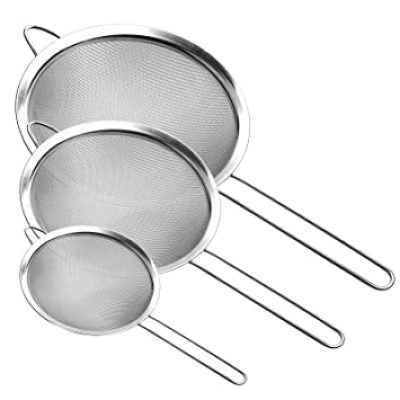Project Report For Sieve
Introduction
Project Report For Sieve is as follows.
A separating technique based on variations in particle size is sieving. Larger particles are retained by the sieve. Using a sieve to separate materials of different sizes is the process of sieving. The material is exposed to mechanical forces of vertical and lateral movement with the use of a netted or perforated bottom vessel through which it is stirred or poured.
The material is moved horizontally or vertically during sifting depending on the technique utilised. The outcome is that the sieve and the particles move in relation to one another. The sample’s degree of granularity or dispersion status largely influence the method that is chosen. The most established method is sieve analysis, which estimates particle size. The particle size distribution is determined by the mass or volume.

Types Of Sieve
- Vibratory Sieving: The sieve bottom’s vibrations propel the sample upward, where it is then pulled downward by gravity. The sieve bottom’s vertical oscillation height is indicated by the amplitude. This combined motion spreads the sample material evenly across the entire sieve region. The particles accelerate vertically, rotate freely, and then statistically reorient themselves. To a few millimeters, the amplitude can be continually changed.
- Horizontal Sieving: The sieves in horizontal sieve shakers move in a plane in horizontal circles. For flat, long, or fibrous materials that have a needle-like shape, horizontal sieve shakers are preferred. The horizontal sifting action causes very few particles to rotate on the sieve.
- Tap Sieving: A tap sieve shaker, a horizontal movement is combined with a vertical motion caused by a tapping force. Sieving processes take longer as a result. Since there are typically more microscopic particles in a given substance, the tapping motion gives the particles a larger impulse. On the other hand, there are less small particles in light substances like flour.
- Air Jet Sieving: The air jet sieve is a single-sewing sieving machine, meaning that only one sieve is utilised for each sieving operation. Throughout the process, the sieve is not moved at all. A vacuum created by a vacuum cleaner attached to the sieving machine draws in fresh air through a revolving slit nozzle while creating a vacuum inside the sieving chamber. The air stream is accelerated and blown against the sieve mesh as it passes through the nozzle’s small opening, scattering the particles. The air jet above the mesh is dispersed over the entire sieve surface and is drawn in slowly through the sieve mesh. As a result, the smaller particles are carried through the mesh holes and into the vacuum or, alternatively, a cyclone.
Get Completely Custom Bankable Project Report
Market Potential for Sieve
In 2022, the global sieves market will be worth US$ 4.0 billion. The market is expected to reach US$ 5.2 billion by 2028, with a 4.6% CAGR from 2023 to 2028.
The food industry is a significant consumer of sieves, particularly in the processing of grains, flour, sugar, and other food products. The pharmaceutical industry is also a significant contributor to the sieve market, as sieves are used in the manufacturing of medicines and drugs. In addition, the construction industry uses sieves for grading and separating materials such as sand and gravel.
The shape, size, product type, end-user industry, and region are the segments used to divide the market for molecular sieves. The market is divided into pellet, beaded, and powdered segments based on shape. The market is divided into microporous, mesoporous, and macroporous segments based on size. The market is divided into carbon, clay, porous glass, silica gel, zeolite, and other product kinds based on product size.
Growing demand from the oil and gas industries has boosted target market growth. Another factor driving the growth of the Sieve market is technological innovation and increased awareness about the treatment of dangerous organic compounds in wastewater.

